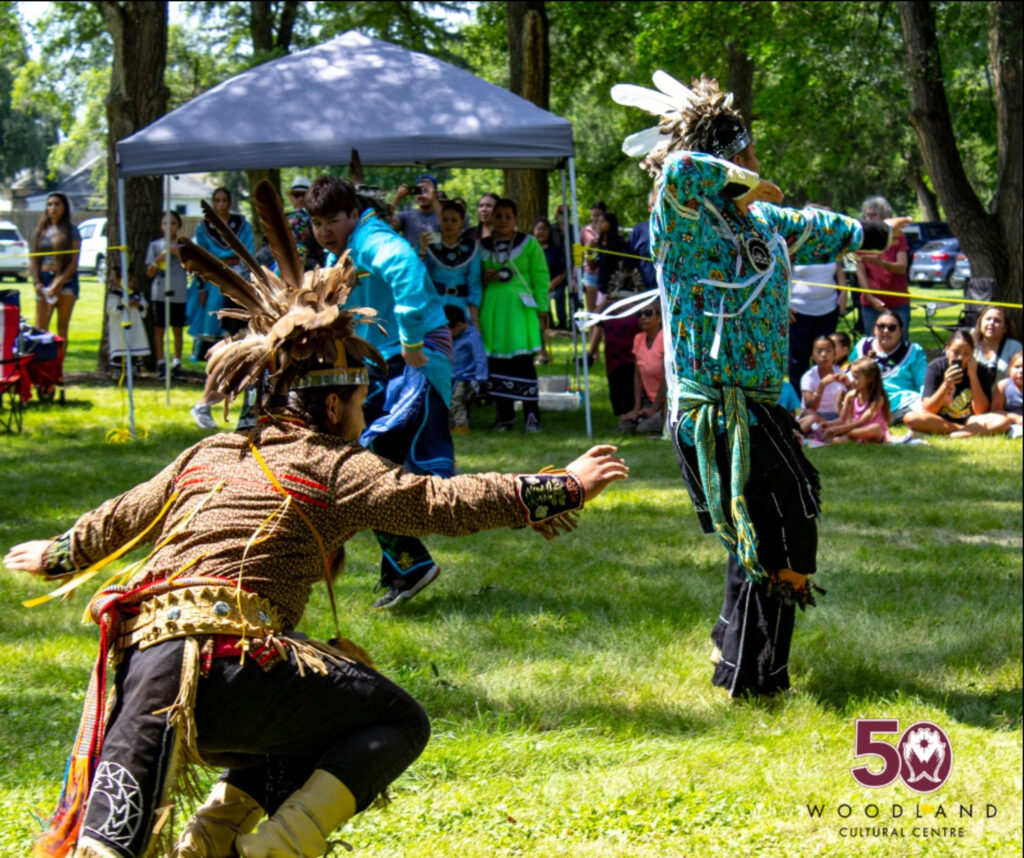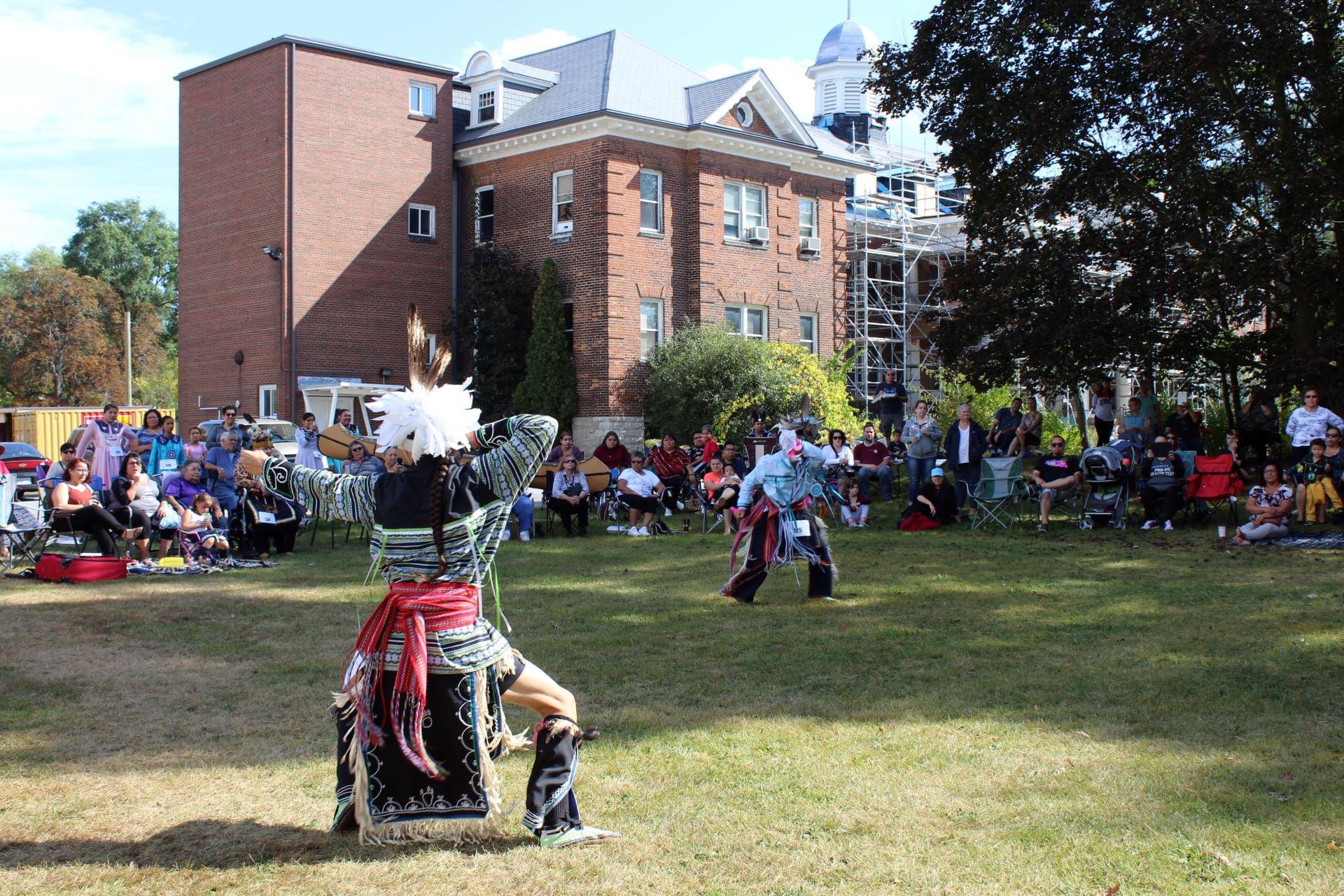The Woodland Cultural Centre (WCC) will be hosting its annual Smoke Dance competition on Saturday, August 17, 2024.
The free event will take place from 11:00 a.m. to 3:00 p.m., with dancer registration beginning at noon, and the two-hour long competition is set to kick off at 1:00 p.m.
A vendor marketplace will also be set up on the grounds for visitors to shop from local creators and the marketplace will open at 11:00 a.m. While some take credit cards, it is recommended to bring cash in the event they don’t.
Heather George, Executive Director of WCC, said that while the centre has hosted several Smoke Dance competitions and demonstrations throughout the last 50 years, the 2024 event will mark the second annual competition since the pandemic.
“This is our second year running this event post covid,” she said. “Prior to the pandemic, I don’t think it was necessarily an annual event, but we held Smoke Dance competitions or demonstrations quite frequently at Woodland and it’s probably been part of our program for the last 50 years.”
George said that while these days, the Smoke Dance is often performed by Haudenosaunee people, the origins of the dance comes from the Osage Nation.
“Traditionally a Smoke Dance was a war dance that was done by men, and the name for it was ‘Wasa’za’ which originally came from the Osage Nation,” she said. “I guess the Haudenosaunee people adopted that form of dance from them long ago with the promise that we would care for it and continue it going forward. It’s really cool because now we sometimes have folks from Osage Nation that actually come up to Brantford and dance with us, and it’s one of those ways that we can see how different Indigenous nations were connected as well. It’s now used more like a rain dance done by both men and women in ceremony and to honour the Thunderers, our grandfathers.”
While there are many traditional dance styles among Indigenous people, the Smoke Dance is different from those you may see at Pow Wow like the Fancy, Jingle or Grass dances.
“It’s a very fast paced dance in terms of the tempo and the choreography that goes into it; I think it’s probably pretty tiring for the dancers and so I’m always really impressed when I see them,” she said. “The event is just a really great opportunity to get to see regalia and beadwork that are more specific to Haudenosaunee people in comparison to some of the styles that are danced at a Pow Wow. So for the people that come out, they’re going to see a lot of the raised beadwork and the leggings with the skirt which are very traditionally Haudenosaunee styles of regalia.”

New to this year’s big event is a special “Switch Dance”.
“The Switch Dance is when men and women switch the style of dance that they’re doing, and so it sort of gives an opportunity for folks to try out the differences within the styles, which is cool,” she said. “I think it gives people an appreciation of each other as well, in terms of what the differences are between them, even between their regalia, because sometimes people will switch regalia as well.”
This year, the competition will feature several age groups including Tiny Tot (five years old and under), Junior (six to 12 years old), Teen (13 to 17 years old), Adults (18 to 44 years old) and Golden Age (45-plus). All ages will be eligible to win a cash prize including the Tiny Tots (usually $5.00).
George said that her favourite part of hosting the Smoke Dance competition is the fact that it shows a sign of resiliency given that it takes place on the grounds of the former Mohawk Institute Residential School.
“My favorite part of my work is when we get to have events and programs like this where we’re really taking back the space and using it to celebrate the continuity of knowledge despite the impact of residential schools. It’s all about taking back a place in a form that is almost like a protest, but in a really artistic, beautiful way,” she said. “It’s also about healing because we’re bringing together so many different generations of people too, so you’ve got everyone from the little kids all the way up to the Elders, and it’s both non-Indigenous and Indigenous folks and so everybody is sort of part of that ceremony and that witnessing of that continuity.”
She said that not only is it empowering and healing for the community, but for the dancers as well.
“I think it’s really empowering for the dancers to have the community come out and see that continuity, and see how they’re caring for those dances,” she said. “I said that it comes originally from the Osage Nation and how it’s like a responsibility for Haudenosaunee people to care for that form of dance and so those dancers, they’re not just dancing for competition, they’re also dancing to continue that knowledge. It really is sort of one of those ways that we heal our communities and uplift each other’s minds.”
Kimberly De Jong’s reporting is funded by the Canadian government through its Local Journalism Initiative.The funding allows her to report rural and agricultural stories from Blandford-Blenheim and Brant County. Reach her at kimberly.dejong@brantbeacon.ca.
